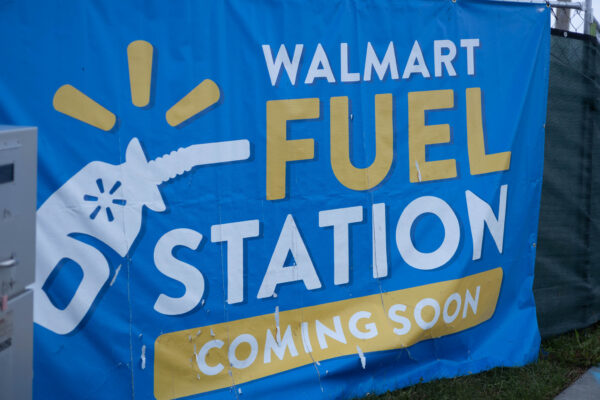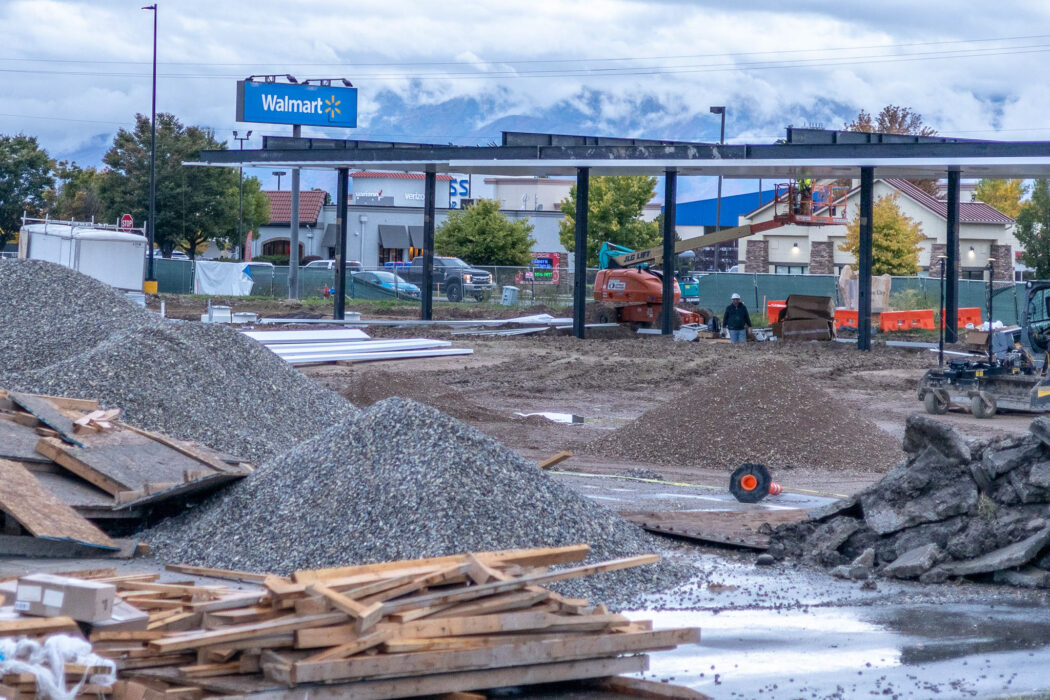Opinion: It’s time to stop fueling climate change
USU’s unofficial theme of the year seems to be construction. The housing department is hard at work revitalizing South Campus. A new LDS Institute building is under construction, and the Biology and Natural Resources building is getting renovations.
New sites are popping up off-campus as well. But while most students are probably thinking about the Raising Cane’s on the corner of Cache Valley Boulevard and Main Street, other developments are also underway, with a far greater impact on our community.
Two new Walmart Fuel Centers are being built in Logan, one for each location in the valley. And naturally, with these will come more gasoline, more emissions and more dependency on fossil fuels, all things the city of Logan should be veering away from.
We have reached the point where climate change is no longer considered a hoax or a possibility. It is real, it is worsening and it is affecting us.
This has been known for decades, and instead of taking action to safeguard both the environment and the people, the city of Logan deems it appropriate to further the issue by approving these projects.
This has the potential to wreak havoc on our local environment. The southern Walmart is located directly next to part of Cache Valley’s wetlands, meaning runoff, erosion or a spill could contaminate the area, causing an untold amount of harm not only in Logan, but beyond the valley as well.
 JACK LEWIS BURTON
JACK LEWIS BURTON Construction continues on the Walmart fueling station on Main Street on Oct. 3.
The wetlands end in Cutler Reservoir, and if gasoline entered the water supply, it could poison the residents of Box Elder County.
The fuel centers will unavoidably have a long-term negative effect on Logan’s air quality, as the fuel will be burnt in cars, adding to the pollution in the air.
With winter approaching, Logan and its surrounding communities will once again be subject to temperature inversions.
Under normal conditions, air cools as it rises, allowing it to disperse into the atmosphere. During an inversion, this blanket of warm air is pushed upwards by a cold front, trapping both natural and manmade particles closer to the ground as the warmer air above prevents them from rising.
Cache Valley is particularly susceptible to inversions because the slopes of the surrounding mountains lock in smog, preventing it from escaping. Vulnerable groups such as children, older adults and those with conditions like asthma can suffer acute respiratory issues.
Even healthy adults can fall ill from pollution. As the lungs take in a lifetime’s worth of air, the amount of particulate matter they must filter accumulates over time, which can cause serious illness and even death.
Data from a 2021 report written by the World Health Organization estimated that air pollution was responsible for 7 million deaths worldwide in 2015. 7 million people dead in a single year.
How many of those deaths were preventable? And more importantly, how many can be prevented in the future?
Instead of prioritizing high-emission car infrastructure, I think the city could subsidize chargers for electric or hybrid vehicles. Many models are within the range of affordability, and, according to the U.S. BLS and EIA, charging an EV is nearly three times cheaper than paying for gas.
We can also advocate for other forms of transportation, such as protected bike lanes or improved CVTD service. Both are cleaner than driving and have added benefits like improved health and lower fatality rates.
Even walking, which is the first, cleanest and longest-standing form of transportation, is often cast aside. Many roads simply lack any form of paved walkway along them, causing pedestrians to suffer an uncomfortable commute or risk walking in the street.
This is an issue even on campus, with the northern portions of 1200 East directly adjacent to both the Student Living Center and Aggie Village, being notably bare.
The addition of two new gas stations in Logan is unnecessary. Not only do we already have 18 to choose from, but it is far beyond time for both our municipal government and the corporations in our city to move beyond the era of gasoline, and on to something brighter.
Maybe then, we’d all breathe a little easier.

